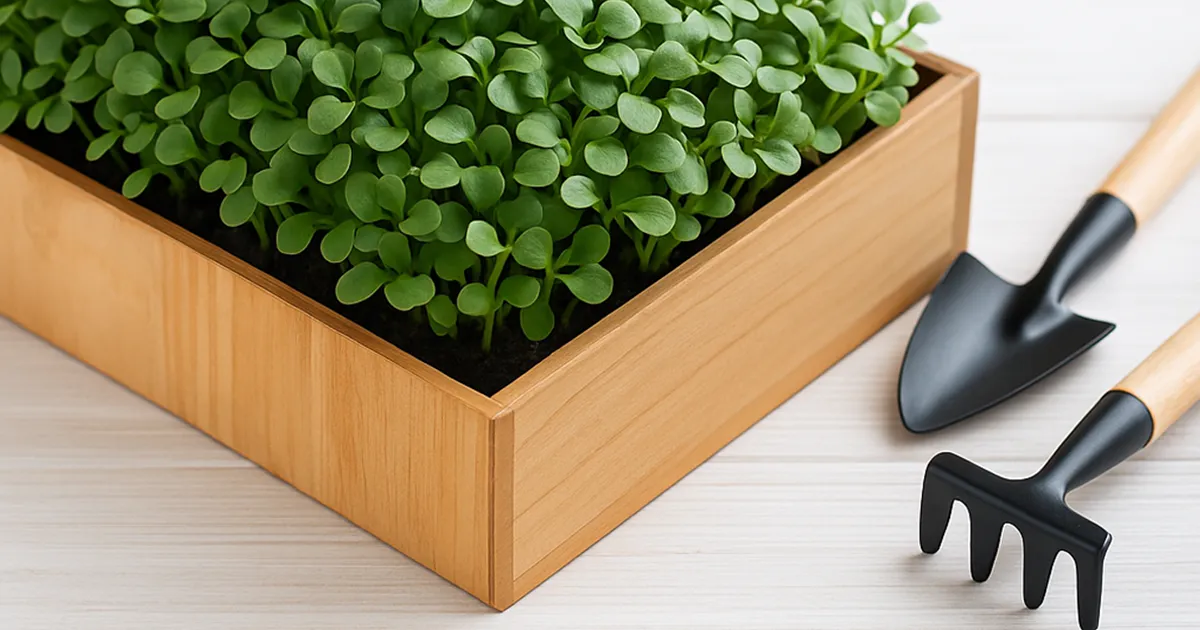
Microgreens may be small in size, but they demand precision. Many beginners jump into microgreens farming with the idea that it’s foolproof—just sprinkle some seeds, mist them, and wait for the harvest. But soon, they’re faced with moldy trays, uneven growth, or disappointing yields. What went wrong?
The truth is, growing microgreens is simple—but not careless. Like any living thing, these delicate plants need the right balance of moisture, light, airflow, and hygiene. Most mistakes aren’t due to lack of effort, but rather small oversights that compound over time.
In this post, we’ll break down the most common mistakes—both technical and practical—that can hurt your microgreens yield and your business potential. Whether you’re just starting or already have a few cycles behind you, this guide will help you grow smarter, cleaner, and more efficiently.
If you’re just getting started and want to learn how to set up everything from scratch, read our complete beginner’s guide: Build a Profitable Microgreens Farming Setup in Your Own Home
1. Overwatering or Underwatering
2. Using Poor-Quality or Contaminated Seeds
3. Skipping the Blackout Phase
4. Harvesting at the Wrong Time
5. Poor Hygiene and Sanitation
6. Inadequate Ventilation and Airflow
8. Using the Wrong Growing Medium
9. Not Keeping Track of Your Growing Data
Why it happens: Microgreens need a moist environment—but not a wet one. Excess water can collect at the base of the tray, creating the perfect environment for mold and fungal growth. Underwatering causes slow germination and patchy, stunted growth.
Solution: Mist your trays lightly with a spray bottle once or twice daily to keep the growing medium evenly moist without soaking it. For larger setups, bottom watering (placing trays in shallow water for 10–15 minutes) helps maintain consistent moisture without soaking the leaves or stem base.
Why it matters: Low germination rates waste both space and time. Some seeds are chemically treated or too old to perform well, especially in microgreens trays where every seed counts.
Solution: Buy seeds from trusted suppliers. Choose non-GMO, untreated, microgreens-specific seeds. To retain freshness, pack harvested microgreens in airtight boxes and keep them in a cool, moisture-free area.
Extra tip: For hard-coated seeds like sunflower or peas, pre-soak for 6–8 hours to boost germination.
What is it? The blackout phase is when you cover the tray to keep it in darkness for 2–3 days post-sowing. This simulates soil coverage and encourages upward, strong growth.
Mistake: Many skip this to speed things up or assume it’s optional—resulting in weak, leggy sprouts with thin stems.
Fix: Always cover the tray during germination. Remove the lid once the shoots are ~1 inch tall and ready for light exposure.
Harvest too early, and you get underdeveloped greens. Harvest too late, and the leaves become bitter, stringy, or yellow.
Best Time to Harvest: When the cotyledon (first pair of leaves) is fully open, but before the first true leaves emerge—usually between 7 to 14 days, depending on the variety.
Tip: Always use sterilized scissors and cut just above the growing medium to ensure a clean, safe harvest.
It’s a detail many ignore, yet it’s essential for maintaining healthy, safe produce. You’re growing something that people eat raw—any lapse in hygiene can lead to bacterial growth or mold issues.
Checklist for hygiene:
Poor airflow and high humidity levels can cause microgreens to develop mold and decay quickly. Lack of airflow weakens the stems and encourages fungal growth.
Solution: Ensure good air circulation. Use small fans on low settings to move air gently around your trays. Also, avoid overcrowding trays or stacking too closely.
After the blackout phase, microgreens need consistent light exposure to grow upright and stay green. Insufficient light makes them tall, pale, and weak.
Fix: Provide 10–12 hours of indirect sunlight or use full-spectrum LED grow lights. Keep the light source directly above the trays to promote straight growth.
Some beginners try to reuse garden soil or any available dirt, which can carry pests or hold too much water.
Recommended mediums:
Avoid heavy or clayey soil at all costs.
Trying to manage your microgreens business without tracking your process is like operating without a roadmap. You won’t know which seed performed well, what your yield per tray is, or how long each variety takes to harvest.
What to track:
A simple notebook or spreadsheet can help you avoid repeating costly errors.
It’s tempting to grow exotic microgreens like red sorrel or amaranth because they look attractive. But if your local buyers only want radish, pea shoots, or mustard—you’ll struggle to sell.
Strategy: Start with demand-first varieties. Talk to local chefs, home cooks, and health stores to find out what’s actually selling in your area. Test new varieties only after establishing your core business.
Once you’ve handled the growing side, the next step is building a real business around it. If you haven’t read it yet, check out: Can You Really Make Money Growing Microgreens? Here’s How to Do It Right
No one starts perfectly. Mistakes are part of the process—but the goal is to learn fast, adapt, and improve with every cycle. By avoiding these common pitfalls, you’ll waste fewer resources, get better yields, and gain customer trust faster.
Microgreens farming rewards attention to detail. Treat it like a system—track, tweak, repeat—and you’ll build something reliable, healthy, and potentially profitable.
Share with like-minded people!
Lorem Ipsum is simply dumy text of the printing typesetting industry lorem.

Starting a microgreens business? Don’t repeat the usual mistakes. This guide reveals why many fail—and what you can do differently to succeed.

Wondering if microgreens can be profitable? This guide breaks down how to grow, sell, and scale a microgreens business the right way—without hype.

Learn how to set up a profitable microgreens farming system from home. This guide covers equipment, growing tips, costs, and earning potential.

AI in trading is rising fast, but can it really predict stock market trends? Discover what AI gets right, where it fails, and how to use it wisely for investing.

Discover 10 smart and easy ways to make money using ChatGPT AI tools—even if you're a beginner. Start earning from content, freelancing, and more today.

Tired of juggling side hustles with little payoff? Learn how mastering one high-income skill can help you earn more, work less, and build long-term freedom. This guide breaks down why focus is your most valuable asset in today’s crowded hustle economy.